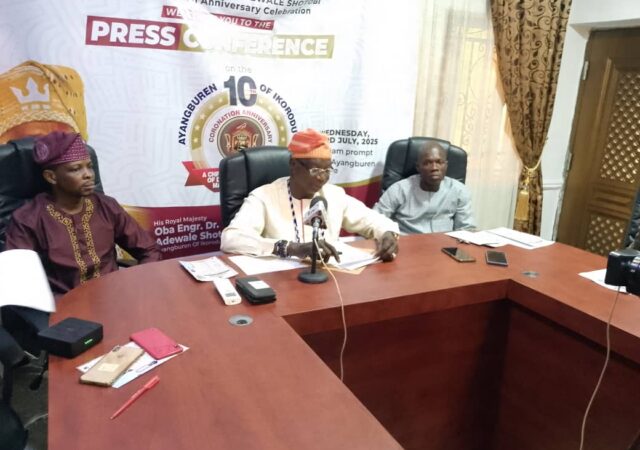In a moment steeped in national significance and historical reckoning, President Bola Ahmed Tinubu has granted a full presidential pardon and conferred posthumous national honours on the Ogoni Nine, nearly three decades after their controversial execution.
The announcement, made during the President’s Democracy Day national address marking Nigeria’s Democracy Day celebrations on June12, signals what he called “a necessary moral act of healing and justice,” aimed at closing one of the darkest and most painful chapters in Nigeria’s environmental and human rights history.
Remembering the Ogoni Nine
The Ogoni Nine—Ken Saro-Wiwa, Baribor Bera, Saturday Dobee, Nordu Eawo, Daniel Gbooko, Paul Levura, Felix Nuate, John Kpuinen, and Barinem Kiobel—were executed on November 10, 1995, by the regime of General Sani Abacha. As prominent leaders of the Movement for the Survival of the Ogoni People (MOSOP), they led nonviolent campaigns against the environmental devastation inflicted on their communities by oil exploration, particularly by Shell Petroleum Development Company.
Their arrest, trial, and execution were widely condemned by the international community—including the United Nations, Amnesty International, and various foreign governments—as politically driven and devoid of judicial integrity. Nigeria faced diplomatic isolation, including suspension from the Commonwealth, and the case became a rallying point for global environmental and human rights campaigns.
In his broadcast, President Tinubu emphasized that this posthumous pardon is not merely symbolic, but a reaffirmation of Nigeria’s commitment to truth, reconciliation, and environmental justice.

Environmental Justice and the Path to Remediation
While the presidential pardon has been hailed by many, environmental and community advocates stress that true justice for the Ogoni people must go beyond symbolism.
In 2011, the United Nations Environment Programme (UNEP) released a groundbreaking environmental assessment of Ogoniland. The report revealed:
- Benzene levels in drinking water at some sites were over 900 times above World Health Organization safety standards.
- Severe oil contamination was found in soil and groundwater, in some cases reaching depths of five meters.
- Widespread ecological damage to mangroves, farmlands, and aquatic life.
UNEP recommended a comprehensive 25–30 year remediation plan, including the creation of a US $1 billion Environmental Restoration Fund and new institutional frameworks such as the Environmental Restoration Authority.
In response, the Hydrocarbon Pollution Remediation Project (HYPREP) was established by the Nigerian government in 2012. For years, progress had been slow and plagued by operational and governance concerns. In recent years however, recent assessments indicate there is now greater transparency, technical capacity, and community involvement which has restored confidence in the project.
Controversial Plans to Resume Oil Exploration
Amid the unfinished remediation efforts, the Federal Government recently announced plans to restart oil production in Ogoniland, over 30 years after it was suspended due to local resistance and unrest. The plan, revealed by National Security Adviser Nuhu Ribadu, aims to boost national revenue and local employment.
However, the announcement has reignited tensions. Groups including MOSOP-USA and over 20 Nigerian civil society organizations have denounced the move, warning that resuming oil extraction without completing cleanup and ensuring community consent could further destabilize the region and undermine reconciliation.
Honours, Healing, and the Road Ahead
President Tinubu’s decision to honour the Ogoni Nine is widely regarded as a long-overdue acknowledgment of their sacrifices. By placing their names on Nigeria’s national honour roll, the government has publicly recognized their role as environmental defenders, martyrs, and champions of justice.
Yet, analysts and advocates alike warn that without practical follow-through—particularly on environmental restoration and inclusive development—this moment risks becoming another hollow gesture. The path to sustainable peace and justice in Ogoniland requires transparent governance, community reparations, and meaningful involvement of the people in decisions affecting their land and future.
Conclusion: From Martyrdom to Memory, and Toward a Just Future
With this formal act of recognition, the Ogoni Nine are no longer remembered solely as victims of state repression. They now stand as national symbols of resistance, dignity, and environmental courage.
Their journey—from vilified dissidents to national heroes—serves as a reminder that while justice may be delayed, it can still be achieved. As Nigeria confronts its environmental challenges and aspirations for energy transition, the legacy of the Ogoni Nine will continue to inspire a more equitable, accountable, and sustainable future.








You should take part in a contest for one of the best blogs on the web. I will recommend this site!
It’s really a great and helpful piece of info. I am glad that you simply shared this helpful information with us. Please keep us informed like this. Thank you for sharing.
Hey, I think your blog might be having browser compatibility issues. When I look at your blog in Chrome, it looks fine but when opening in Internet Explorer, it has some overlapping. I just wanted to give you a quick heads up! Other then that, great blog!
Adorei este site. Para saber mais detalhes acesse nosso site e descubra mais. Todas as informações contidas são conteúdos relevantes e diferentes. Tudo que você precisa saber está ta lá.
Wonderful goods from you, man. I have understand your stuff previous to and you are just too magnificent. I really like what you’ve acquired here, really like what you’re saying and the way in which you say it. You make it entertaining and you still care for to keep it sensible. I cant wait to read much more from you. This is really a tremendous web site.